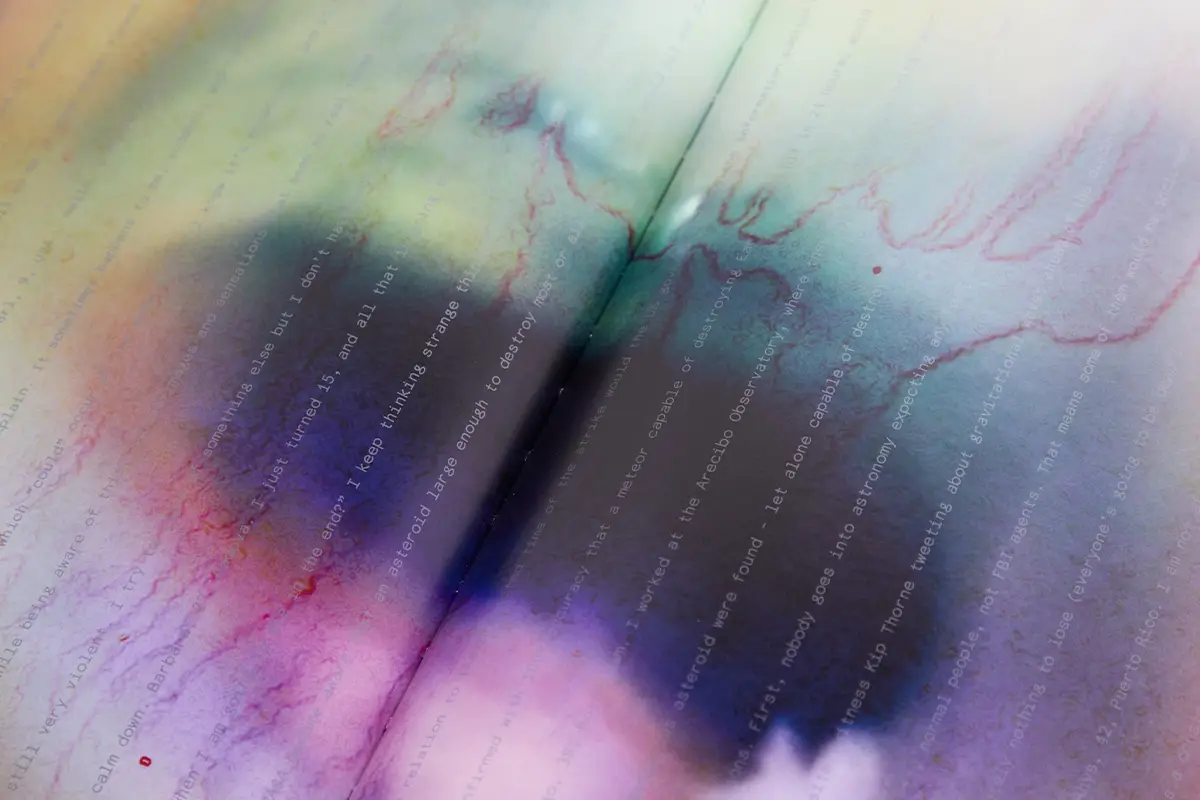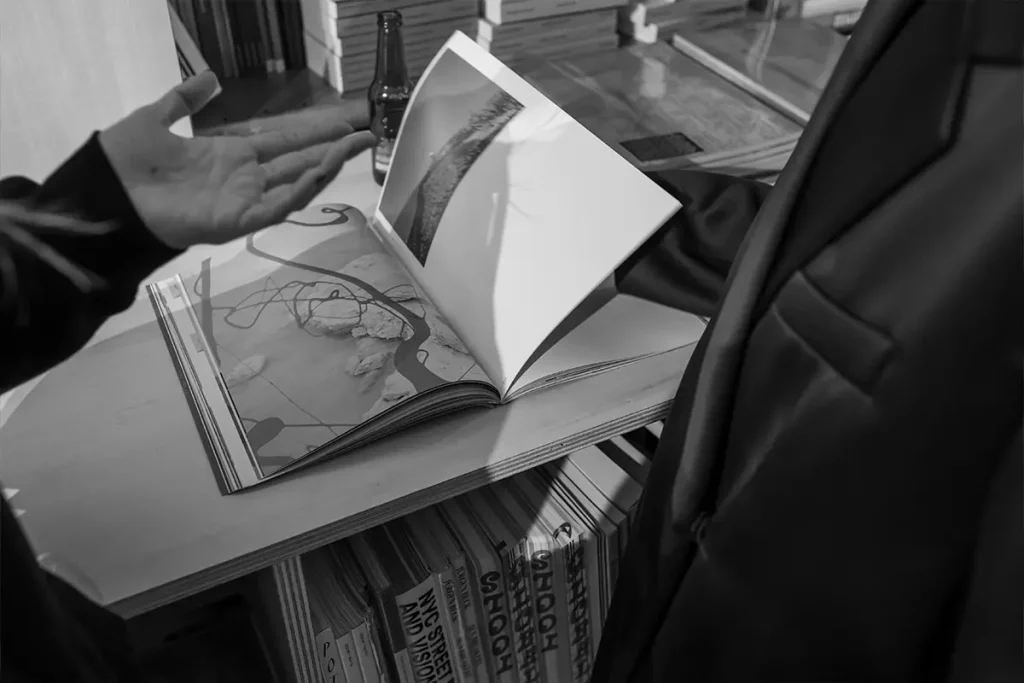From alien invasions to eco-anxiety. The photographer Alice Rosati gives voice to collective fears through a post-apocalyptic scenario and her rough analog photography
Collective fear has a rough aesthetics – They Are Coming in the analog photography of Alice Rosati
In 1998, American novelist, poet, and playwright, Joyce Carol Oates published on Salmagundi Magazine – an international quarterly magazine of politics, culture, literature, and the arts published at Skidmore College – an essay titled The Aesthetics of Fear, in which she sheds light on her predilection for dark creatures of all kinds which often populate her fiction.
In her essay, Oates questions the nature of collective fear: «Is fear a singular, universal experience, or is it always changing, indefinable?». Above all, she questions the mysterious charm of emotions such as anxiety, anguish, terror, which throughout history have occupied a portion of the artistic production of writers, poets, painters. The aesthetic fear, elicited by novels and films, is certainly not real, but only a simulation of what is unpredictable and ungovernable in our lives; a sort of emotional and mental preparation for the authentic experience, which invades our lives when we least expect it.
They Are Coming: the rough collective fear of the unknown
The Aesthetics of Fear opens with a quote from Supernatural Horror in Literature, written by the American writer of weird, science, fantasy, and horror fiction, H. P. Lovecraft, between 1925 and 1927: «The oldest and strongest emotion of mankind is fear, and the oldest and strongest kind of fear is the fear of the unknown».
Alice Rosati’s latest rough editorial project published by CODA, They Are Coming, is a journey through the psyche, the dark corners of our mind where irrational fears nestle and spread. As Oates explains, the fiction of writers such as Lovecraft or Edgar Allan Poe in fact delves into the interior of the soul, creating a direct connection between collective fears and terrifying visions of cosmic catastrophes. And this is precisely what Rosati does in They Are Coming, between rough fiction and speculation.
They Are Coming, Alice Rosati roughness in photography – collective fear of a generation date back June 2012
The origins of this photographic book date back more than ten years ago, more precisely to the evening of June 6, 2012. During a dinner party, one of the guests came out with a sensational piece of news: an asteroid was getting dangerously close to the earth. The impact was scheduled for December 21 of that same year, which according to a Mayan legend corresponded to the end of the world. That date was the subject of numerous ruminations, extravagant ravings, and speculations. As well as having inspired a couple of questionable apocalyptic films, but in the end, nothing of what was predicted came true.
At that same table the news was met with laughter and dismissal by the guests as highly improbable. Yet this was not the case for Rosati, whose nights, for the next six months, were plagued by apocalyptic dreams of alien invasions and rough war scenes. She developed symptoms of PTSD, frequent panic attacks, and social anxiety. These symptoms abruptly ceased when the prophesied collision failed to materialize.
Alice Rosati’s terror management system – exorcizing collective and personal fears: the dawn of civilization
Each of us experiences a rough psychological conflict, which derives from the clash between our survival instinct and the awareness of our mortality. Since the dawn of civilization, human beings have tried to cope with this sense of anguish and terror through a combination of escapism and cultural beliefs, in an attempt to provide our life and earthly actions with greater values and meanings. This coping strategy is called a terror management system.
To exorcize her fears, Rosati took refuge in art. Spanning between different media – rough photography, text-based work, videos, and computer graphics – she began a varied artistic production which, after ten years, led to the creation of this book. The first body of work dates back to 2012-13 and is composed of equally realistic and abstract images depicting desolating and almost post-apocalyptic settings and alien entities which tease our perception. In 2021-22 she revisited some of these works through digital manipulations and disturbing new scenarios.
The Mothership Series / The Blob Series – roughness in Alice Rosati’s book They Are Coming
The title They Are Coming alone portends the arrival of unknown and possibly hostile creatures. A collective fear that has besieged human minds for centuries. Many even claim to have witnessed alien manifestations, such as the so-called crop circles, UFO sightings, and so on. The Mothership series and Blob series depict alleged extra-human presences on earth.
The first is a series of shots of human-made structures, such as electrical and water facilities and observatories, which resemble enormous spaceships. On the other hand, in the Blob series Rosati portrays river rocks in the guise of alien eggs, from which gelatinous and sticky fluorescent substances come out. The desolate settings, such as deserts, woods, and a riverbank, are enhanced by the total absence of humans, while these large and tiny inanimate bodies seem about to open at any moment revealing their extraterrestrial inhabitants.
The Aerial Attack and Desolated Lands series – analog photography is rough, according to Alice Rosati
These disturbing series comprise several subjects: the colors of dawn and sunset during intercontinental flights at 12,000 feet, warplanes flying over Paris, signaling the outbreak of war, and views of a post-atomic war.
In these images, even though they date back about ten years ago. The contingencies of a painful present that everyone must deal with. Rosati’s cinematic aesthetic and her grainy subjects make the shots look like still images from war or science fiction films, while at the same time providing them with a universal dimension that everyone can empathize with.
Alice Rosati’s analog photography and recent production: from the Breeded Series to Anxiety Trigger
Almost a decade later, those themes have returned – as relevant as ever – to populate Rosati’s photographic production, such as in the Explosion series in which aerial views of cities are combined with images of burning buildings and explosions. In the Breeded series, Rosati digitally manipulated a portrait of herself to create countless doppelgangers, as if the aliens from the Blob series and Mothership series had taken over the earth and had been genetically modified by their physical encounters with humans.
Finally, the book is completed with a selection of still images of shots from her video Anxiety Trigger, a series of clips depicting meteorite collisions with Earth or alien invasions from several different films – one above all, Melancholia by Lars Von Trier, perhaps one of the most engaging and sharp on the topic. As predicted by the title, the video is distressing, but at the same time it triggers interesting reflections on how real experiences of traumatic events are treated and conveyed by the media to the public, and on how they become protagonists of our collective consciousness.
The liquid fear of the 21st century: eco-anxiety, socio-political crises
In an era marked by uncertainties and value, economic, and socio-political crises, collective fear has taken on new faces and meanings: wars far and near, new weapons of mass destruction, eco-anxiety – widespread among young people, who see in violent atmospheric and natural manifestations the omens of a near end. In the mid-1990s, Sociologist Zygmunt Bauman coined the term liquid fear to indicate this sense of anguish, insecurity, and anxiety which grips contemporary society.
Drawing from contemporary languages capable of speaking to new generations, Rosati has given voice to these new forms of collective terror, which are never senseless or useless, however irrational they may seem. To quote Oates: «What we fear most, I suggest, is not death; […]. We fear the loss of meaning most. To lose meaning is to lose one’s humanity, and this is more terrifying than death; […]. These fears, these anxieties, these recurring and compulsive nightmares, so powerfully dramatized by artists of the tragic and the grotesque through centuries, are not aberrations. The aesthetic of fear is the aesthetic of our common humanity».
The analog photography of Alice Rosati
Alice is an Italian photographer and director based in Paris. She has developed several projects in the fashion field. For Lampoon Magazine’s The Working Issue she shot Future archeology – Louis Vuitton Resort 24. In November 2023 her rough photo book The Are Coming was released by CODA, an independent publishing house based in Paris.




















